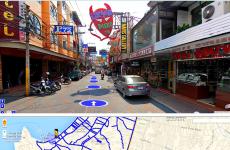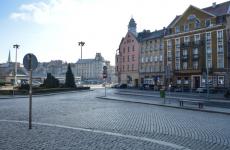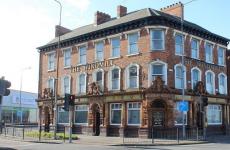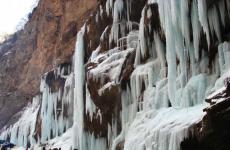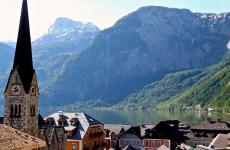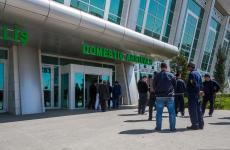City of Keszthely, Hungary. A story about a trip to Hungary: a report on a trip to Köszthely
Continuation of the series “Travel with a Dog”. The previous report is called. In this part, Blosik explores the sights of Hungary in general and Keszthely in particular.
1. Flea about Dobogomayor
2.Dog in Dobogomayor
3. Dog in the Abadzia club. Keszthely
4.Keszthely and Baron Festetics
5. Bloshik tells. Dog in Keszthely
6.Lake Heviz
7.A private look at the sights of Hungary:
a)Ivy in Hungarian parks
b) Monuments of Keszthely
c) Lake Balaton. Swans
d) Castles of Hungary
d) Tapolca
e) Houses in Hungary
Flea about Dobogomayor
“Wow, finally. We arrived and settled in. Let's go for a walk around the area.
The air is delicious. Warm. 
Mostly cats live here. There are even special houses for them. 
Flowers are blooming everywhere. 
We need to look around. It’s probably good here.”
Dog in Dobogomayor

Flea liked it in Dobogomayor, we didn’t really like it. We were allocated some kind of used apartment, apparently because we had a dog with us. Our home turned out to be spacious, two-level (bedroom on the top floor), but the furniture was old, everything was shabby. And this despite the fact that we paid an additional 10 euros for Flea every day! 
As a result, everywhere on the territory is beautiful, but in our room, not so much. 
Dog in the Abadzia club. Keszthely
At the next resort we decided not to advertise Bloshik. After spending 7 days in the city of Heviz in Dobogomajor, we moved to Keszthely, to the Abadzia club. We asked for a nice room in advance. And Flea is small, we decided, we will take him for walks in a chest carrier. Nobody will notice. 

They gave us the most beautiful apartment. But when it was time to check out, the receptionist asked point blank:
– Was there a small dog with you?
They tracked it, that is. There was nothing to do, I had to pay here too.
Thus, Blosik’s stay in the resorts of Hungary cost us 150 euros. 
Keszthely and Baron Festetics
The local oligarch Baron Festetics made a great contribution to the development of the southern coast of Lake Balaton. (Festetics Gyorgy, XVIII century). I recommend looking at the details on the website: https://www.tourister.ru/world/europe/hungary/city/kheviz/castles/17229
The baron probably spent most of his time at the court of Maria Theresa in Vienna, but he did not forget his native places.
In the south of Lake Balaton is the town of Keszthely. It has a thousand-year history. Archaeologists have excavated Roman baths in its vicinity. In the 14th century, the Hungarians built a Christian Franciscan church here, which still stands today. Mongol hordes came here with plunder. And later these places were captured by the Ottoman Turks.
Festetics already lived in more enlightened times, when the Christian brothers were liberated from Muslim oppression by the great Habsburgs, included Hungary in their possessions, and Austria-Hungary was formed.
In Keszthely, Festetics began to build a manor. Yes, such that Maria Theresa would not be ashamed to accept her. A real palace. 
Thanks to Festetic's investment, the city's population received jobs and quadrupled.
His estate has now become a museum. By the way, that’s where it goes.
And Festetic himself remained in the memory of the city. They erected, or rather “planted,” a bronze statue of him in the main square. We all took turns taking pictures with him. 
- Flea, do you also want to bark your weighty dog word?
- Woof!
Bloshik says. Dog in Keszthely
“Once upon a time there lived in this city a good owner, Festetic. He built a large house with a garden and stables. Previously, many hunting and guard dogs lived in the house and in the wide yard, there were horses, and large chickens - peacocks - walked around the park. Inhospitable people have now settled in the house, who didn’t like the fact that I was running on the grass, smelling flowers and leaving my business cards on the bushes, saying hello to the local dogs from relatives from Russia. My mother and I were sent away together.
But Festetic himself is not to blame for this, he is now sitting frozen on a bench on the main street of the city, so I will take a photo with him as a souvenir. The park near his house is simply wonderful, even the water in the pond is delicious.” 
Lake Heviz
The biggest attraction in the south of Lake Balaton is Lake Heviz. There are many stories about him on the Internet, I will not repeat myself, I will refer to the website of the Filatkin family. Details about water, treatment and other tricks of staying on Lake Heviz are described in the third part of the series “Small Towns and Dogs of Europe”.
They say that before, when there were many animals in the forest, wounded deer and wild boars went to the lake to heal their wounds. The ubiquitous Romans built thermal baths on the lake and enjoyed the healing properties of the water. But for a long time this place was difficult to access. Low marshy banks, swamps, trees grew and fell, forming impassable rubble. It was the same Baron Festetic who sorted it all out. He gathered the peasants, inspired them, financed them. The lake was formed into solid banks, the swamps were driven into irrigation canals, and park trees were planted. Since then, Lake Heviz and the small town around it have been a European balneological resort.
Now let's look at Heviz through the eyes of Bloshik.
“My owners went to this place every day. Their skin then smelled of something... silvery, velvety and soft... And the air around this place was all saturated with such a spicy, strong smell. Even the fog is there. What's there? I think it's the water that smells like that. It should taste salty. It feels warm to the touch. There's a lot of this water there. And every day many, many owners go to this water. They climb into it and sit for a long time, probably warming themselves. Local dogs don’t go there.”
A private look at the sights of Hungary
There is more than enough information about the sights of Hungary on the Internet. I won't repeat the obvious. I just want to draw attention to what surprised me and caught my eye.
Ivy in Hungarian parks
Monuments of Keszthely
It was striking that in the town of Keszthely there are a lot of monuments and memorial plaques on houses. Did so many great people of Hungary really live here? 
Or maybe they were on vacation? Or maybe they simply honor the founder of the clan in every home? The pioneer who built this house?
In Keszthely we lived on Erzsebet Kiralyne Street (1837-1898, Sisi).
The Sisi monument stands right on the Balaton embankment. Since Elizabeth (aka the famous Princess Sisi, wife of Franz Joseph, the last Habsburg emperor) was a dog lover, Bloshik wanted to take a photo with her. 
Lake Balaton. Swans
Swans greeted us at Lake Balaton. There are many swans, they are very beautiful.
But their character is bad. The swans persistently beg for food, and we specially brought bread for them. 
But when they wanted to get closer to them, the swans began to hiss with might and main and almost bite.
Swans also quarrel among themselves. One was driven away, expelled from his company for something, and then he swam with us alone. 
How not to remember the “ugly duckling”?
Castles of Hungary
There are many medieval castles all over Europe. And they exist in Hungary too, we were told.
But the first castle disappointed us. This was the fortress of Szigliget. We carefully climbed the mountain, paying 600 forints (20€). But at the top there were only a couple of destroyed walls, several cannons, and three restored rooms. One of them is a church.
“The fortresses built by the Hungarians for defense against the Mongols and Turks were ordered to be torn down by the Habsburgs in order to avoid national liberation uprisings,” we read in the annotation. – Some castles have now been specially restored for tourists.
“Well, no, no,” we decided and, having admired Lake Balaton from the mountain, we didn’t look for any more fortress.
Tapolca
But in the town of Tapolca there is a super attraction. underground cave 
with a whole labyrinth of lakes and channels through which you can sail by boat. 
All the grottoes of the cave are beautifully illuminated. This is a completely safe, well-decorated area. 
But the cave itself goes both deeper and deeper, so those who wish can take part in special excursions with speleologists.
Detailed information about Tapolca can be found here:
https://www.tourister.ru/world/europe/hungary/city/tapolca
Excursions in Keszthely from private guides and travel agencies.
Online ordering on Pomogator.Travel: no intermediaries or prepayments!
Keszthely- a small tourist town located 200 kilometers from the Hungarian capital. Already in the Middle Ages the city occupied a leading position.
Keszthely will friendly introduce its guests to old, narrow streets and Baroque palaces. In addition to the sights and elegant images of architecture, the city offers tourists to relax on a modern beach, which is located along the coast of clear Lake Balaton. At the very beginning of our era, this place was already noticed by the Romans. The first mention of the city, recorded in writing, dates back to the mid-13th century.
 In the 18th century, as soon as the Turks were expelled, the active construction of the city with mansions and churches in the Baroque style, fashionable at that time, began. Today the city has turned into the cultural and historical center of the country. The city is dotted with pedestrian streets, so the best way to explore its features is to take your time, walking slowly among the cathedrals.
In the 18th century, as soon as the Turks were expelled, the active construction of the city with mansions and churches in the Baroque style, fashionable at that time, began. Today the city has turned into the cultural and historical center of the country. The city is dotted with pedestrian streets, so the best way to explore its features is to take your time, walking slowly among the cathedrals.
Local residents lead a relaxed lifestyle, regularly organize holidays and festivals, which tourists from all over the world rush to attend. Thanks to the nearby Lake Balaton with its healing waters, Keszthely has become a tourist center.
Video from Keszthely
Keszthely is a fairly old city, built on the shores of Lake Balaton. The main attractions come down to historical and architectural buildings. The most striking architecture is embodied in the castle of the Festich family, who once ruled the city. The palace is one of the largest and most valuable attractions on...
Keszthely: tours and activities
 Keszthely is a city offering ample opportunities for tourism.
Keszthely is a city offering ample opportunities for tourism.
Despite the small size of the city, there are many attractions, most of which are concentrated in the historical part of the city. It is better to explore them on your own during a leisurely walk through small, old, cozy streets.
You can, of course, use the services of a guide and find out more detailed information about the city. Keszthely is often called the “city of festivals”. Indeed, the locals do not deny themselves anything on holidays. In the summer, a flower festival takes place. Along the main city avenues there are numerous platforms decorated with various types of flowers. The aroma spreads throughout the area.
 Recently, a festival of organ grinders has been held in early September. Musicians from all over the world come to Keszthely to demonstrate their favorite instrument and show their skills.
Recently, a festival of organ grinders has been held in early September. Musicians from all over the world come to Keszthely to demonstrate their favorite instrument and show their skills.
You can entertain yourself with a short boat excursion on the lake. It is not expensive, but a lot of impressions are guaranteed. The ferry can take tourists to the other side of the reservoir, where there is an open-air ethnographic museum.
History of Keszthely
The city was already an important trading center in Roman times. The first written mention of this city dates back to 1247, but scientists claim that a settlement of ancient people in its place existed in the second millennium BC. The history of the city starting from...
 The territory of Keszthely is dominated by a temperate continental climate.
The territory of Keszthely is dominated by a temperate continental climate.
Summer here is hot and long, the sun is ready to warm the earth around the clock. The beach season begins in May and ends in mid-September. Winter is quite mild, there is little snowfall, but the lake is covered almost every year with a layer of ice, the average thickness of which reaches 15 centimeters, and sometimes 70. The lake often brings with it strong, gusty and cool winds, which can be dangerous for lovers of sailboats and small boats. yachts Therefore, special services monitor the wind strength.
Keszthely: entertainment and active recreation
 Keszthe, located on the shores of Lake Balaton, offers ample opportunities for water sports.
Keszthe, located on the shores of Lake Balaton, offers ample opportunities for water sports.
In summer, sailing is very developed. Crowds of tourists rush to come to the resort town and compete in their ability to own a yacht or sailboat. At this time, stunning views of green waters and snow-white ships, shining from the bright rays of the sun, open from the shores. Sports lovers will be happy to visit the sports ground, play tennis on the court or simply play a game of volleyball. Many tourists prefer walking through the historical center of the city to passive relaxation on the beach. Fishing sport is not poorly developed. A trip to the museum - Helikon Castle - will provide a lot of impressions. The model of the old railway occupies the entire second floor. You can watch the toy steam locomotives for hours.
 One of the most famous city beaches, Varosi Strad, offers guests excellent opportunities for an unforgettable holiday. There are many cafes and restaurants on the promenade, where experienced chefs will offer you to taste local national cuisine. Children will be delighted with the water attractions, which resemble an entire open-air water park.
One of the most famous city beaches, Varosi Strad, offers guests excellent opportunities for an unforgettable holiday. There are many cafes and restaurants on the promenade, where experienced chefs will offer you to taste local national cuisine. Children will be delighted with the water attractions, which resemble an entire open-air water park.
Transport features of Keszthely
 Since Keszthely is a resort town, naturally the transport system is developed at a sufficient level. Trolleybuses and buses run around the city.
Since Keszthely is a resort town, naturally the transport system is developed at a sufficient level. Trolleybuses and buses run around the city.
Tourists are recommended to explore the city on foot. Therefore, in the historical part of the city it is better not to use public transport. If you are not sure that you can get to your destination on your own, you should use a taxi. The cost is calculated based on the meter readings. There is no metro in the city.
There is a highway and a railway near the northern coast. In addition, there is a port in Ketshei where ships moor daily.
Keszthely is one of the oldest Hungarian cities located on the southwestern shore of the largest lake in Central Europe - Lake Balaton. The city is famous for its ancient and beautiful architecture and museums.
Lake Balaton itself is one of the main resort areas in Hungary. There are many mineral and thermal water springs along its shores. There are also well-equipped city beaches. Keszthely was purchased by the Festetics family in the 18th century. After which large-scale construction of a magnificent family palace began, which is the third largest in all of Hungary.
The estate of Kristofer Festich is the first palace complex to appear on the shores of Lake Balaton in the mid-18th century. The palace is a beautiful building of 40 halls and an adjacent area with a beautiful park area. The building gradually expanded, and already at the end of the 18th century the palace had a huge library on 100 thousand copies. This collection of unique and valuable books is rightfully considered a national treasure of Hungary.
The Festetics Palace was repeatedly expanded and completed, but the last major reconstruction was carried out at the end of the 19th century. Then the building finally acquired a neo-Baroque style, and the number of interior rooms increased to 100.
Today, all interested tourists can book excursions around the palace and enjoy the luxurious decoration of the estate.
Location: Kastély u. - 1.

Another wonderful architectural landmark of Keszthely is the Town Square with the Town Hall. The building is made in the classical Baroque style. Erected at the beginning of the 18th century. In the center of the square itself there is a large column dedicated to the Holy Trinity. It was erected at the end of the 18th century. The square and the adjacent city hall are made in the late Baroque style.
From the town square there is a large pedestrian area - Kossut Street, along which there are various restaurants and cafes. Walking along the pedestrian area you can see many buildings made in a classical style. Also here you can find the building of the former city hall and the modern cultural center named after Goldmark. A little further behind a beautiful arch is the old Synagogue. The building was rebuilt more than once and now it is made in the eclectic style.

But one of the oldest surviving buildings in Keszthely is the Franciscan Church. After all, it was built back in 1386. The church was built in the late Gothic style. During Turkish rule, the church was turned into a fortress. But already during the Kingdom of Hungary, after the expulsion of the Turks, the church was restored. It was restored and rebuilt many times, and at the end of the 19th century the Franciscan Church acquired a bell tower.
Inside the Franciscan Church, one of the richest Gothic frescoes in Hungary has been preserved to this day. Also near the church you can find two interesting monuments. The first is located in front of the church - this is a statue of Istvan Lakfi Palatine on horseback.
Location: Fő ter - 9.
City museums
Keszthely has a rich history. Much information about this old European city and its culture can be learned from local museums. Let's look at the most famous of them:

Located in the Festetics Palace. It was formed in the city in 2008. About 200 species of animals living both in Hungary and in other countries are represented here. All animals are housed in their natural habitats. A visit to such a museum will be quite educational for both children and hunting enthusiasts.

It is located in the same building as the previous museum only on the second floor. Here are models of trains from different eras and different European countries. Models of railways in different cities are also presented. In this museum, visitors will be able to see almost the whole of Europe in miniature.

This is another small museum of Keszthely. It is located in a former agricultural school founded in 1979 by the famous Gyorg Festetics. The museum is dedicated to the agriculture of the region. In addition to excellent agricultural exhibits, the museum also contains a large collection of agricultural machinery.
Location: Bercsenyi Miklós u. - 65.

As the name implies, this museum is dedicated to Lake Balaton. A large number of specimens of flora and fauna inhabiting the lake and its surroundings are collected here. The museum also contains archaeological finds that tell about the life and culture of local residents.

Location: Múzeum u. - 2.

Almost a few hundred meters from the Festetics Palace you can find the incredible Marzipan Museum. The museum displays various souvenirs and products made from children's favorite sweets. One of the largest is the model of the Festetics Palace. It took the craftsmen about 2 months to create it. There is a special store next to the museum. Here everyone can buy sweets for every taste.

Location: Katona József u. - 19.

This is a small building that houses a huge collection of dolls. All dolls are dressed in Hungarian national costumes and are distributed in chronological order. Thus, all visitors can observe changes in the folk costumes of the Hungarians in different historical eras.
Location: Kossuth Lajos u. - eleven.

The Keszthely Toy Museum is no less interesting. Although it was built relatively recently, in 2010. Yet his collection includes more than 10,000 toys.

Location: Kossuth Lajos utca - 11.

Lake Balaton is not the only interesting water attraction in Keszthely. Also near the city, 6 km to the north, is Lake Heviz. It is the largest in the world and at the same time the only thermal lake in all of Europe.

Near Lake Heviz you can find the perfectly preserved Batthyany Castle. Near the castle there is a huge park with centuries-old trees. The castle was built by the noble Battyany family back in the mid-18th century. It served as a family estate for the count's family.
The castle was rebuilt and restored several times. Now it houses the Battyany family museum, where everyone can learn the history of the noble count family.

One of the main defensive structures in the Keszthely region is the old Sumeg fortress. For a long time, this fortress was considered an impregnable stronghold. And since 1552, Sümeg was the residence of the bishop.
Try to visit the Sumeg fortress. Although it is located 25 km from the city, all lovers of medieval history should definitely visit this architectural monument. After all, amateur and historical reconstructions and festivals are often held here. And from the high mountain on which the fortress is built, a stunning view opens up.
City of Keszthely(Keszthely) is located 160 km southwest of Budapest, on the shores of Lake Balaton. The city's population is about 22,000 people.
Keszthely is the largest and oldest city on the lake.
History of Keszthely
Already at the beginning of our era, Roman settlements existed in these places. Not far from the city, archaeologists discovered the remains of a fortified Roman military camp dating back to the 2nd-4th centuries.
The first mention of the city dates back to 1247. At the beginning of the 15th century, Keszthely received city rights. The Franciscan church, built in 1386, has survived to this day.
In the 16th century, Keszthely, like all Hungarian cities, was subject to Turkish invasion, as a result of which the city suffered. And in the 18th century, after the expulsion of the Turks, large-scale construction of mansions and churches began in Keszthely. In 1745, the Festetics family palace was built, which is the main attraction of the city.
Sights of Keszthely:
– is one of the largest and most beautiful Hungarian estates, surrounded by a magnificent English-style park. The palace was built in the 18th century and belonged to the Festetics family. The noble family of Festetics became famous as philanthropists and patrons of the arts, thanks to them a gymnasium, an agricultural lyceum, as well as pharmacies and a hospital were opened in the city. In total, the palace has 101 halls, some of which belong to the museum, and some of the halls are used for conferences.
Address: Keszthely, Kastély u. 1.

Main square(Fő tér) – in the center of the square in 1170 a column of St. Trinity. Also on the main square is city hall building, built in the Baroque style in the 18th century, it now houses the Cultural Center. Goldmark. Another attraction in the square is Franciscan Church, which was originally built in 1386 in the Gothic style, was later rebuilt several times, and in 1880 a bell tower was added to it. The church houses the richest collection of Gothic frescoes in Hungary.
Hunting Museum– opened in 2008. The museum displays more than 200 species of animals in their natural habitat.

On the second floor of the building there is another interesting museum – model railway trains. Models of railways in Europe are presented. A very interesting museum, almost all of Europe is represented in miniature.
Address: Keszthely, Pál u.1

Georgikon Museum– the museum’s exposition tells about the history of agriculture in Hungary.
Lake Balaton Museum– founded in 1898, dedicated to the history of Lake Balaton, its flora and fauna.
Address: 8360 Keszthely Múzeum utca 2.
– was opened in 1996, located next to the Festetics Palace.
Address: 8360 Keszthely, Katona József utca 19
Puppet Museum— the museum presents a large collection of dolls in national Hungarian costumes from different historical eras.
Keszthely is a city in southwestern Hungary, located in the southwestern part of Lake Balaton. This is the largest and oldest town in the vicinity of Lake Balaton. Many of its streets still retain the atmosphere of a provincial town of the last century. The city is located approximately 160 km southwest of Budapest.Keszthely was already the center of the region in the Middle Ages; at the beginning of the 15th century it received the status of a city. In the middle of the 18th century, the city was purchased by the Festetics family. The magnificent palace they built is the third largest in the country and is considered the most beautiful restored palace in Hungary.
The climate is temperate continental, with cold, cloudy winters and fairly hot summers. The average annual temperature is 9.7 degrees; in summer the thermometer can rise to 27-35 degrees, in winter it ranges from 0 to -15. Annual precipitation is 600 mm.
Since the Middle Ages, the center of Keszthely has been F? t?r Square, whose name translated into Russian means “Main”. It’s best to start your trip around the city from here. The dominant feature of the square is the Gothic Franciscan monastery and its church. Thanks to its powerful walls, during the Turkish invasion this building was turned into a border fortress. The church boasts the richest collection of Gothic frescoes in Hungary in its sanctuary. Despite its antiquity and many reconstructions (the temple was built in 1386), the temple is very well preserved. Representatives of the noble noble family of Festetics are buried in the crypt.
Kossuth Street originates from the Main Square, the northern section of which has been turned into a pedestrian zone. Among the many beautiful buildings that rise majestically on both sides of the street, house number 22, or Pethoe House, deserves special attention. Built in the 18th century on medieval foundations, it is famous for the fact that the outstanding Hungarian composer Károly Goldmark was born here in 1830. There is a synagogue in the courtyard of the building. The city coat of arms on the facade of house 28 indicates that in the old days it was the city hall. Nowadays the Goldmark Cultural Center is located here.
At the northern end of Kossuth Street stands the imposing neo-baroque building of the Balaton Museum. On its first floor there are Roman and medieval lapidariums; permanent exhibitions on the second floor introduce museum visitors to the origins of the lake, the history of local bathing and water navigation, its flora and fauna.
The continuation of Kossuth Street is Kastėli Street (Kast?ly utca). Here, in the center of a beautiful well-kept garden, rises the main attraction of Keszthely - the magnificent Festetics Castle. It is not difficult to guess that the palace received its name in honor of the noble family to which it once belonged. Built in the mid-18th century under Kristof Festetics on the model of French mansions, the palace is distinguished by the luxury of its external and internal decoration and is one of the largest in Hungary. At the end of the 18th century, the famous Helikon palace library, numbering 52,000 volumes, was founded here.
Representatives of the Festetics family became famous as philanthropists who actively supported art and science. Thanks to them, a hospital, a pharmacy, a gymnasium appeared in the city, and at the end of the 18th century, the first agricultural school in Europe (!) was opened here. The Festetics actively supported art, literature, and museums in Hungary.
Luxurious furniture, paintings in gilded frames, massive fireplaces decorated with fine carvings, rich trinkets and household items - the palace interiors provide an opportunity to take a fascinating journey into the world of the Hungarian nobility of the 18th–19th centuries. The halls on the first floor display the most valuable and beautiful examples of Hungarian weapons from different eras (some of them are 1000 years old!). The library is not only the most beautiful hall of the palace, but also one of its main values. Here is the only private collection of books preserved in its original form, numbering about one hundred thousand volumes. The main rarities of the library include: the first printed books, unique engravings, sheet music with original autographs of Haydn, Pleyel, Goldmark. After examining the interior of the palace, you can stroll among the spreading trees and well-groomed bushes of the park adjacent to the palace, inhaling the intoxicating aromas of flowers.
In addition to its cultural significance, the Balaton region has always been famous for the wines produced here. You can get acquainted with the history of Balaton viticulture and winemaking by visiting the Hungaricum Wine House or the Bacchus Wine Museum. The latter showcases wines from 21 other Hungarian wine-producing provinces.
Queen Erzbet Street, also starting from the Main Square of the city, will lead us to the Balaton coast; The villas towering here were built mainly at the beginning of the 20th century. The pier, which extends far into the lake, serves as a boat dock and is also a favorite spot among local fishermen.
Every day at the end of July, a wonderful holiday with the unusual name “Wine Boulevard” takes place on the coast, during which you can taste Balaton wine, as well as watch performances of folklore ensembles. Lovers of nature and solitude can also stroll along the picturesque alleys of Helikon Park, which is one of the main natural attractions of Keszthely.
Along with historical sights and museums, Keszthely offers its guests to relax on an equipped beach on the shores of the pristine Lake Balaton. Thanks to its excellent beaches and the diligent Hungarian approach to organizing holidays, Keszthely is extremely popular among Austrians and Germans.
20 km from Kesztehely rises the “father of Hungarian castles” - the impregnable Sümeg, founded during the reign of the founder of Hungary, St. Stephen. This gigantic castle, towering impregnably above the small town of the same name, was one of the few Hungarian strongholds that the Turks were unable to take by storm.
